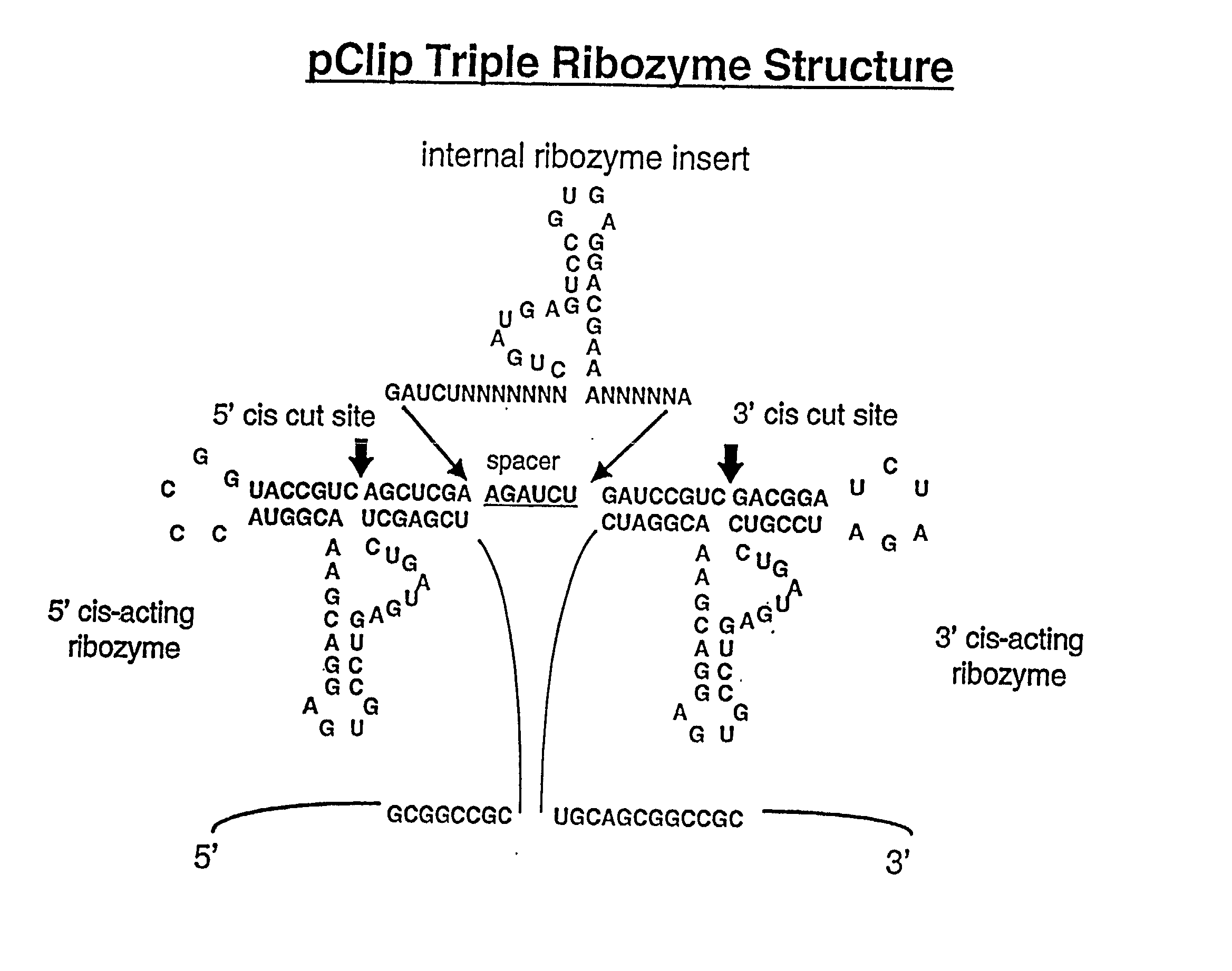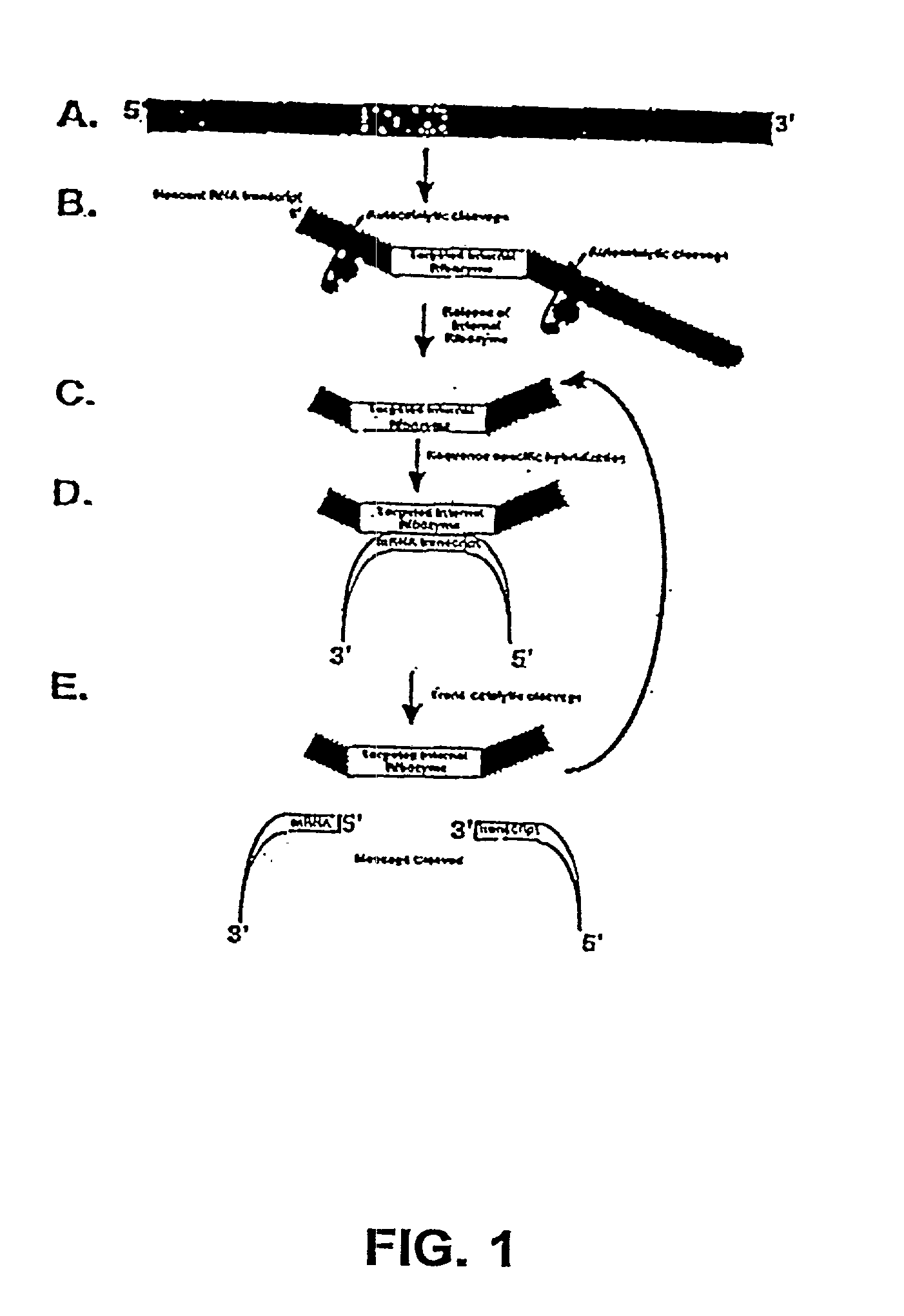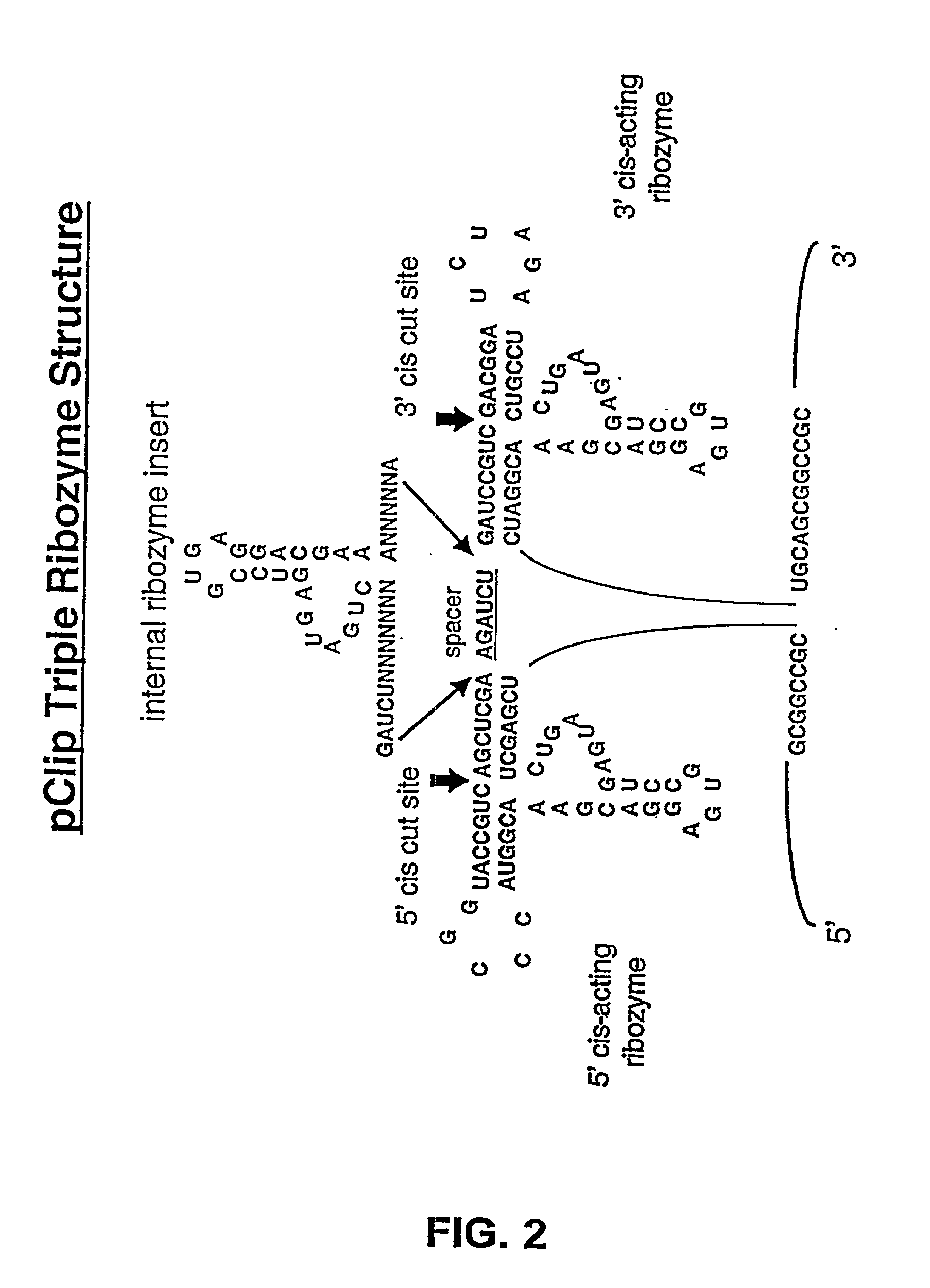Tissue-specific and target RNA-specific ribozymes
a ribozyme and target technology, applied in the field of multiribozymes, can solve the problems of not being able to definitively answer any of these questions, applying anti-sense technology, and serious technical feasibility questions, and achieves effective and efficient release of targeted internal ribozymes, slow or enhanced cleavage activity, and enhanced activity
- Summary
- Abstract
- Description
- Claims
- Application Information
AI Technical Summary
Benefits of technology
Problems solved by technology
Method used
Image
Examples
Embodiment Construction
[0052] The present invention relates to multi-ribozymes and their use to target RNA in a tissue-specific or target-specific manner for the treatment of disorders and disease related to cellular proliferation, cancers and bacterial, parasitic, or viral infections. The multi-ribozymes of the present invention may be engineered to target one or more specific RNAs contained in a specific cell or tissue in the host. The multi-ribozymes of the present invention may also be engineered to target one or more specific RNAs encoded by a specific pathogen, virus or microbial agent.
[0053] The multi-ribozyme(s) of the invention contain two separable functional regions including a "catalytic core" which cleaves the target RNA or RNAs, and flanking regions which include a target RNA-specific binding site. The catalytic core contains one or more ribozymes known as trans-acting ribozymes. The flanking regions are located nearby or adjacent to the catalytic core, and contain ribozymes known as autocat...
PUM
| Property | Measurement | Unit |
|---|---|---|
| total volume | aaaaa | aaaaa |
| pH | aaaaa | aaaaa |
| recombinant nucleic acid | aaaaa | aaaaa |
Abstract
Description
Claims
Application Information
 Login to View More
Login to View More - R&D
- Intellectual Property
- Life Sciences
- Materials
- Tech Scout
- Unparalleled Data Quality
- Higher Quality Content
- 60% Fewer Hallucinations
Browse by: Latest US Patents, China's latest patents, Technical Efficacy Thesaurus, Application Domain, Technology Topic, Popular Technical Reports.
© 2025 PatSnap. All rights reserved.Legal|Privacy policy|Modern Slavery Act Transparency Statement|Sitemap|About US| Contact US: help@patsnap.com



